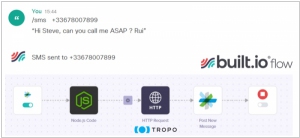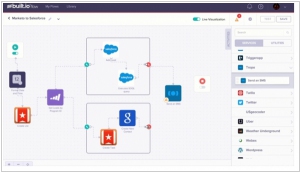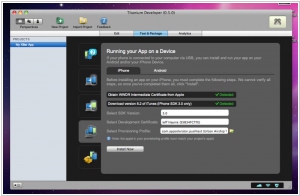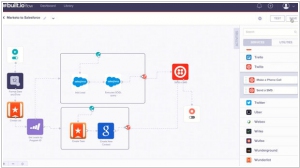Appcelerator vs Built.io
June 10, 2023 | Author: Sandeep Sharma
Appcelerator and Built.io are both platforms used for mobile app development, but they differ in their approach, features, and target audience. Appcelerator, also known as Axway Appcelerator, is a comprehensive mobile app development platform that enables developers to create native and cross-platform apps using a single codebase. It leverages JavaScript and offers a hybrid approach, allowing developers to build apps that closely resemble native apps using web technologies. Appcelerator provides a range of features, including UI design tools, API integration, data management, and analytics. It targets professional developers and enterprises that require advanced customization options, cross-platform capabilities, and access to native APIs. On the other hand, Built.io is an integration platform as a service (iPaaS) solution that focuses on providing a visual, drag-and-drop interface for building integrations and workflows. While it offers app development capabilities, it primarily emphasizes integration and automation. Built.io simplifies the process of connecting various systems and applications without extensive coding knowledge. It caters to both technical and non-technical users looking for a user-friendly integration platform.
See also: Top 10 Mobile App Builders
See also: Top 10 Mobile App Builders
Appcelerator vs Built.io in our news:
2016. Built.io launches an IFTTT for business users

Built.io has been providing an integration tool called Flow, which has empowered technical users such as IT admins and developers to build intricate, multi-step integrations effortlessly using a drag-and-drop interface. However, the company has recently unveiled a more simplified version of Flow, specifically tailored for business users seeking to establish IFTTT-like connections among applications like Cisco Spark, Slack, Gmail, Marketo, and Salesforce. To differentiate between the two services, the previous iteration of Flow is now referred to as Flow Enterprise, while the new version is branded as Flow Express. This distinction clarifies the varying capabilities and target users of each offering.
2016. Built.io Flow makes building enterprise integrations easier

Built.io is set to launch a significant update to its enterprise integration service, Flow, aimed at simplifying the process of creating more robust integrations for businesses. Flow is a user-friendly tool that utilizes a drag-and-drop interface to build enterprise integrations. It combines the capabilities of Yahoo Pipes (R.I.P.) and IFTTT to connect services such as Salesforce and Marketo, enabling streamlined automation of sales processes within organizations. It's important to note that integration remains a prominent aspect of the enterprise landscape, with many development firms specializing in assisting clients in connecting various third-party services. The Built.io team asserts that their solution can significantly reduce the time required for these integrations, transforming a process that typically takes weeks into a matter of hours.




